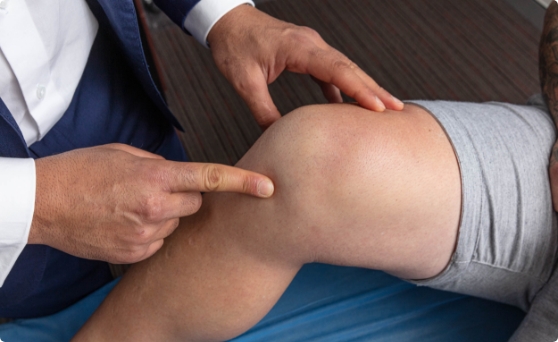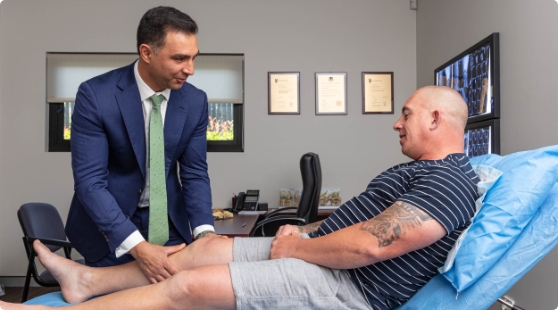Knee Arthroscopy Conditions
What is a Knee Arthrosopy?
Knee arthroscopy is a common surgical procedure performed using an arthroscope (a viewing instrument), to look into the knee joint to diagnose or treat a knee problem. It is a relatively safe procedure and a majority of patients discharge from the hospital on the same day of surgery.
The knee joint is one of the most complex joints of the body. The lower end of the thighbone (femur) meets the upper end of the shinbone (tibia) at the knee joint. A small bone called the patella (kneecap) rests on a groove on the front side of the femoral end. A bone of the lower leg (fibula) forms a joint with the shinbone.

To allow smooth and painless motion of the knee joint, articular surfaces of these bones are covered with a shiny white slippery articular cartilage. Two C-shaped cartilaginous menisci are present in between the femoral end and the tibial end.
Menisci act as shock absorbers providing cushion to the joints. Menisci also play an important role in providing stability and load bearing to the knee joint.
Bands of tissue, including the cruciate and collateral ligaments, keep the different bones of the knee joint together and provide stabilization to the joint. Surrounding muscles are connected to the knee bones by tendons. The bones work together with the muscles and tendons to provide mobility to the knee joint. The whole knee joint is covered by a capsule, which further stabilizes the joint. This capsule is also lined with a synovial membrane that secretes synovial fluid for lubrication.
Book an Appointment Today!
Indications for Knee arthroscopy
The knee joint is vulnerable to a variety of injuries. The most common knee problems where knee arthroscopy may be recommended for diagnosis and treatment are:
- Torn meniscus.
- Torn or damaged cruciate ligament.
- Torn pieces of articular cartilage.
- Inflamed synovial tissue.
- Misalignment of patella.
- Baker’s cyst: a fluid filled cyst that develops at the back of the knee due to the accumulation of synovial fluid. It commonly occurs with knee conditions such as meniscal tear, knee arthritis and rheumatoid arthritis.
- Certain fractures of the knee bones.

